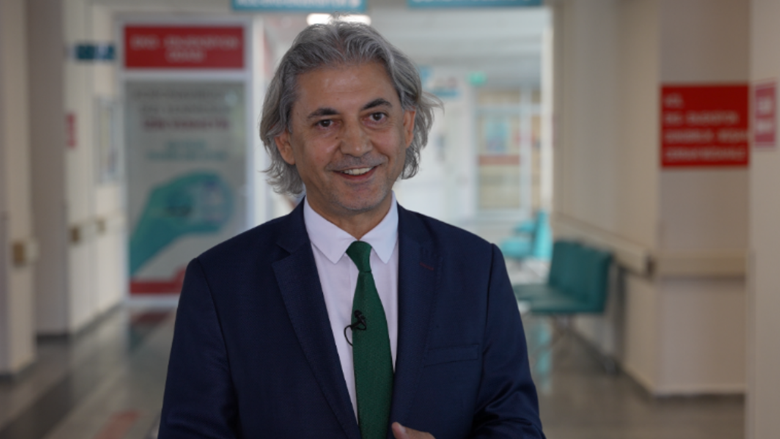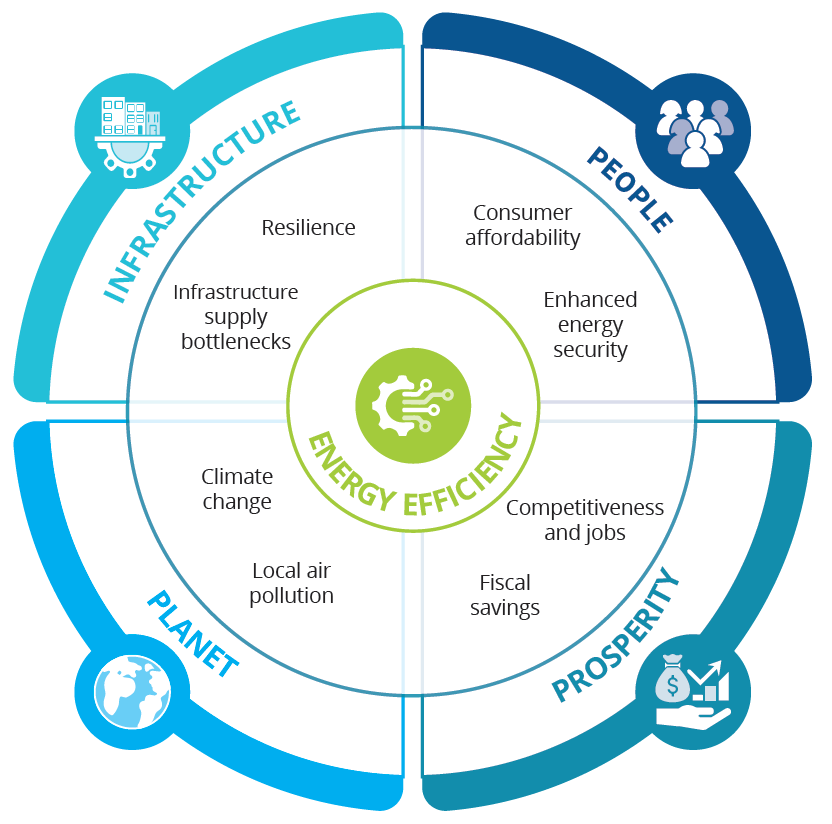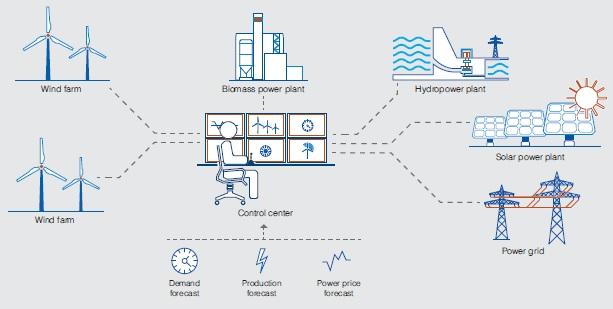Energy Efficiency: A Catalyst for Sustainable Development and Economic Growth
Energy efficiency represents a transformative, low-cost solution that accelerates access to affordable and secure energy while stimulating economic growth. With rising power demand driven by factors such as air conditioners, heavy industry, and data centers powering artificial intelligence, energy efficiency enables countries to avoid excessive spending on new energy infrastructure, fuel imports, and increased debt burdens in the energy sector.
Investing in energy efficiency yields substantial returns—between 3 to 5 dollars for every dollar invested—while fostering economic growth, job creation, and numerous socio-economic benefits. It enhances living standards and working conditions for over a billion people worldwide lacking reliable, affordable energy access for essential activities such as lighting, cooking, heating, and cooling, aligning closely with the United Nations Sustainable Development Goals (SDGs), particularly SDG 7 (Affordable and Clean Energy), SDG 8 (Decent Work and Economic Growth), and SDG 11 (Sustainable Cities and Communities).
Powering More with Less: Türkiye’s National Energy Efficiency Initiatives
Türkiye’s integration of energy efficiency into its first National Energy Efficiency Action Plan (NEEAP) in 2017 demonstrated promising returns. Mobilizing $8.5 billion in investments, the country achieved a 14% primary energy saving, equivalent to 24 million tonnes of oil. Building on this success, Türkiye’s 2nd NEEAP plans to invest over $20.2 billion by 2030 across residential, commercial, industrial, and public sectors to save more than 37 million tonnes of oil equivalent.

The World Bank-supported Energy Efficiency in Public Buildings Project laid the foundation for broader market development, eventually benefiting Türkiye’s private sector. Implemented by the Ministry of Environment, Urbanization and Climate Change and the Ministry of Energy and Natural Resources, the project has enhanced institutional capacity to support energy efficiency renovations.
Key achievements include:
- Renovation of approximately 372 public buildings
- Annual energy savings of nearly 200 GWh, powering up to 300,000 homes
- Reduction of $11.5 million in annual energy bills
- Improved working conditions for nearly 80,000 individuals in schools, hospitals, and offices
The government is now developing a national program to refurbish about 500,000 public buildings, aiming to mobilize $8.8 billion in investments from donors and the private sector, contributing to SDG 9 (Industry, Innovation, and Infrastructure) and SDG 13 (Climate Action).
Charles Cormier, Regional Director for Infrastructure for Europe and Central Asia, emphasized the importance of energy efficiency: “Türkiye has emerged as a regional leader through its national program and early participation in the World Bank’s new $1.5 billion Scaling Up Energy Efficiency program. Its experience is shaping a regional model for large-scale renovations that boost energy security, attract private financing, curb demand, and improve people’s lives.”
Case Study: Kandıra State Hospital Energy Efficiency Reform
The Kandıra State Hospital in Kocaeli, serving 800 patients daily and up to twice that in summer, benefited from energy efficiency upgrades including an advanced automation system for heating and cooling management. This system facilitates rapid detection and resolution of energy losses or malfunctions.

Gürol Aydemir, Financial Affairs Director at the hospital, stated: “We are incredibly proud of the energy efficiency project implemented in our hospital. Between January and April 2025, our electricity bill reduced by nearly 20%. We expect to achieve the project’s goal of 35% energy savings, allowing us to redirect substantial savings toward other essential operating costs.”
Powering New Opportunities and Jobs Through Energy Efficiency
Energy efficiency was the largest source of employment in the energy sector in 2022, with nearly 11 million jobs worldwide, supporting SDG 8 (Decent Work and Economic Growth). Türkiye’s project provided technical training to over 3,500 individuals, enhancing workforce skills in energy services and construction.
Additional global initiatives include:
- IFC’s EDGE Program: A green building certification program that has trained over 10,000 experts worldwide.
- India’s Energy Efficiency Services Ltd: Created nearly 700 direct jobs and thousands of indirect jobs in efficient appliance production.
- Caribbean Efficient and Green-Energy Buildings Project: Upgrading over 500 buildings in Grenada, Guyana, and St. Lucia, with a focus on skills training and employment for women.
Maria Marcela Silva, Regional Director for Infrastructure, Latin America and the Caribbean, highlighted the potential: “Increasing energy efficiency investments supports energy security and economic growth. Although investment is currently low in Latin America and the Caribbean, abundant opportunities exist to scale up engagements.”

Urgent Collective Action Required to Scale Up Energy Efficiency
Unlocking the full potential of energy efficiency requires a concerted “LEAP” approach, as outlined in a new World Bank Group report. This approach encourages clients, donor partners, and the private sector to embed energy efficiency at the core of energy policy and planning, supporting SDG 17 (Partnerships for the Goals).

Key components of the LEAP approach include:
- Leadership: Prioritizing energy efficiency in government policies.
- Enabling Environment: Strengthening institutions and regulatory frameworks.
- Access to Finance: Mobilizing technical assistance and financing to scale projects.
- Partnerships: Engaging multilateral development banks, donors, and private sector actors.
Over the past decade, the World Bank’s energy efficiency lending portfolio has supported investments in public and residential buildings, industry, public lighting, and water pumping. The Bank is now expanding its impact through programmatic approaches, global challenge programs, innovative financing, and private sector engagement.
Demetrios Papathanasiou, Energy and Extractives Global Director, stated: “Energy efficiency is a key element of our strategy to strengthen the energy sector. Through our Scaling Up Energy Efficiency Academy, we foster global knowledge-sharing and support policy and institutional reforms, accelerating the transition from pilot projects to scaled national programs.”
1. Sustainable Development Goals (SDGs) Addressed or Connected
- SDG 7: Affordable and Clean Energy
- The article focuses on energy efficiency as a means to provide affordable, reliable, and sustainable energy.
- SDG 8: Decent Work and Economic Growth
- Energy efficiency investments are linked to economic growth and job creation, including technical training and workforce upskilling.
- SDG 9: Industry, Innovation, and Infrastructure
- Upgrading infrastructure such as public buildings and hospitals with energy efficiency technologies.
- SDG 11: Sustainable Cities and Communities
- Renovation of public buildings and improving living and working conditions in urban areas.
- SDG 13: Climate Action
- Energy efficiency contributes to reducing energy consumption and associated emissions, supporting climate goals.
2. Specific Targets Under Those SDGs Identified
- SDG 7 – Target 7.3: By 2030, double the global rate of improvement in energy efficiency.
- Türkiye’s National Energy Efficiency Action Plans (NEEAP) aim to save millions of tonnes of oil equivalent through investments by 2030.
- SDG 8 – Target 8.2: Achieve higher levels of economic productivity through diversification, technological upgrading, and innovation.
- Energy efficiency investments yield economic growth and create millions of jobs worldwide.
- SDG 9 – Target 9.4: Upgrade infrastructure and retrofit industries to make them sustainable, with increased resource-use efficiency.
- Renovation of public buildings, hospitals, and other infrastructure with energy efficiency measures.
- SDG 11 – Target 11.6: Reduce the adverse per capita environmental impact of cities, including by paying special attention to air quality and municipal and other waste management.
- Energy efficiency renovations improve urban living and working conditions.
- SDG 13 – Target 13.2: Integrate climate change measures into national policies, strategies, and planning.
- Energy efficiency as a key part of energy policy and planning to reduce emissions and energy demand.
3. Indicators Mentioned or Implied to Measure Progress
- Energy Savings (tonnes of oil equivalent)
- Türkiye’s energy savings quantified in millions of tonnes of oil equivalent (e.g., 14% or 24 million tonnes saved).
- Energy Consumption Reduction (GWh per year)
- Annual energy savings in buildings measured in GWh (e.g., 200 GWh saved per year in renovated buildings).
- Financial Savings ($ million)
- Reduction in energy bills (e.g., $11.5 million saved annually by public buildings, 20% electricity bill reduction in hospital).
- Number of Buildings Renovated
- Tracking renovated buildings (e.g., 372 buildings renovated, plans to refurbish 500,000 public buildings).
- Job Creation and Workforce Training
- Number of people trained or employed in energy efficiency sectors (e.g., 3,500 people trained in Türkiye, 11 million jobs globally).
- Percentage Energy Savings
- Targeted percentage reductions in energy use (e.g., hospital aiming for 35% energy savings).
4. Table of SDGs, Targets, and Indicators
| SDGs | Targets | Indicators |
|---|---|---|
| SDG 7: Affordable and Clean Energy | 7.3: Double the global rate of improvement in energy efficiency by 2030 |
|
| SDG 8: Decent Work and Economic Growth | 8.2: Achieve higher economic productivity through innovation and diversification |
|
| SDG 9: Industry, Innovation, and Infrastructure | 9.4: Upgrade infrastructure to be sustainable and resource-efficient |
|
| SDG 11: Sustainable Cities and Communities | 11.6: Reduce environmental impact of cities |
|
| SDG 13: Climate Action | 13.2: Integrate climate change measures into policies and planning |
|
Source: worldbank.org







